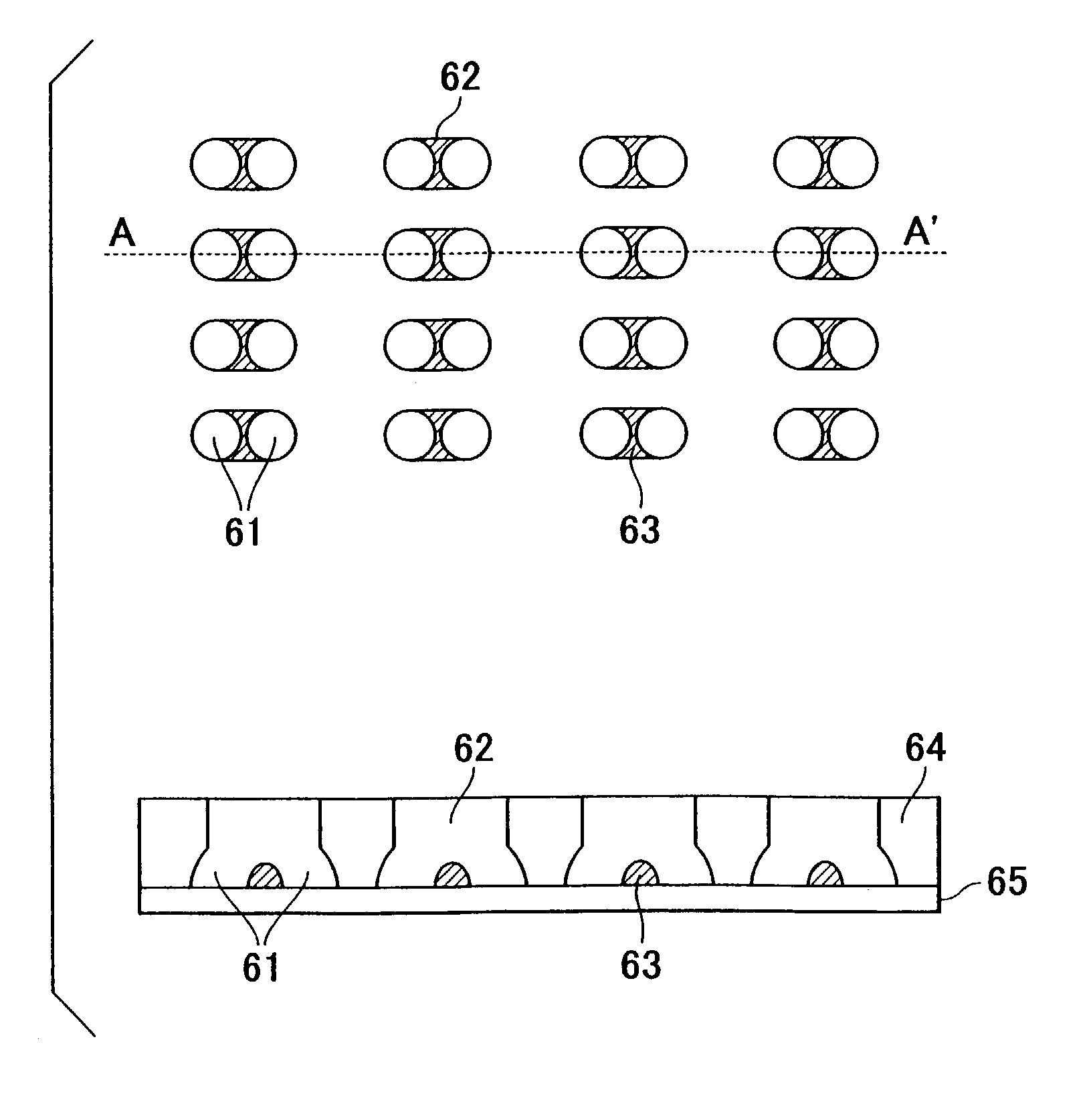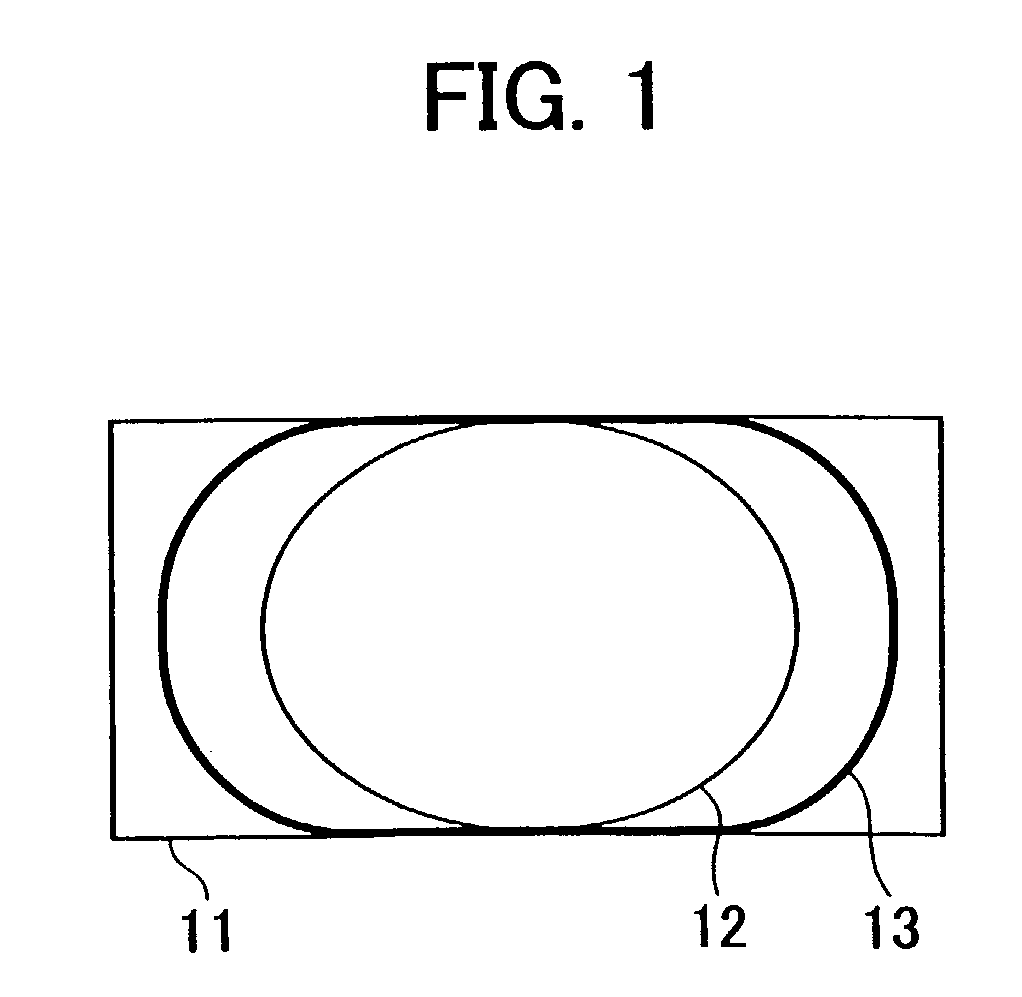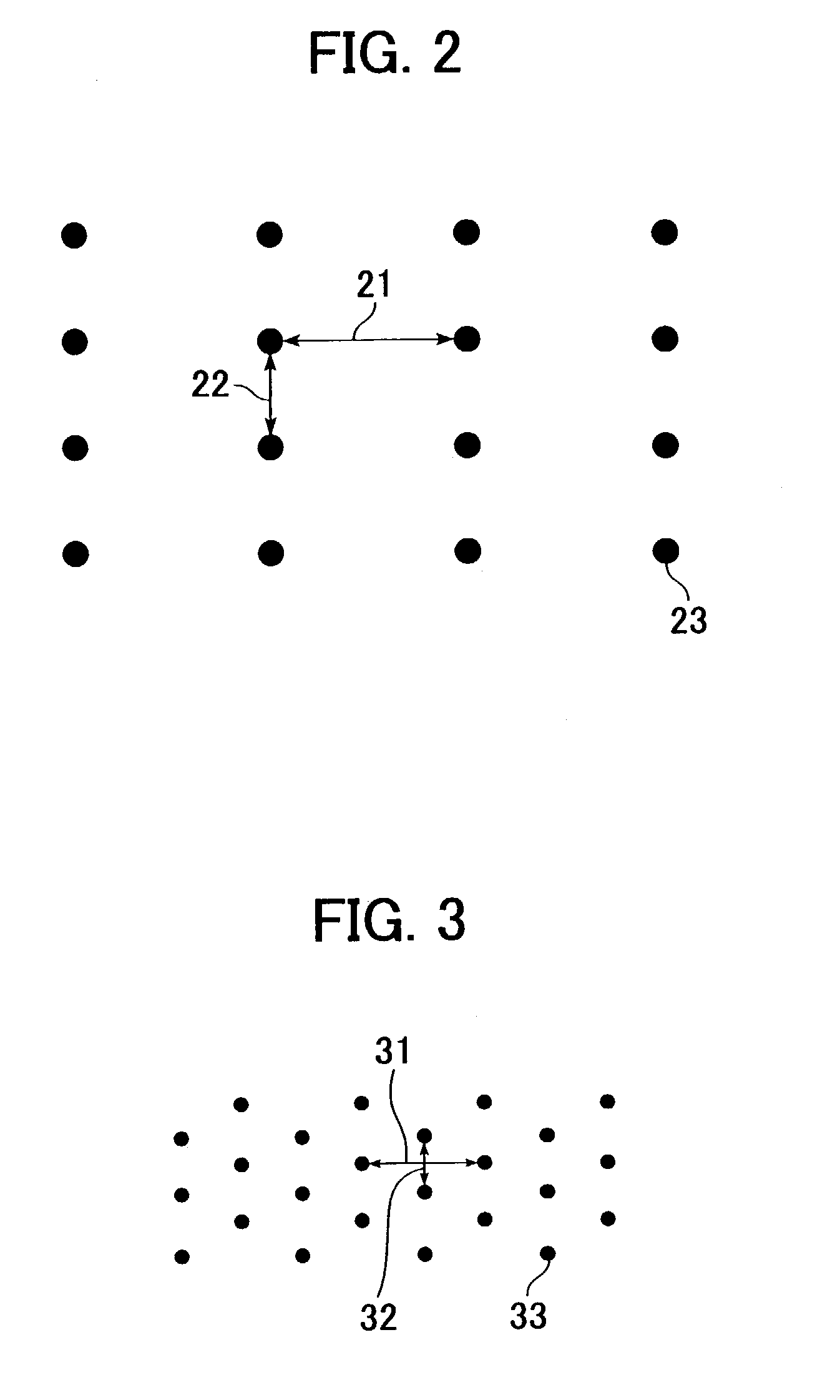Structure having pores, magnetic recording medium, and method of manufacturing same
- Summary
- Abstract
- Description
- Claims
- Application Information
AI Technical Summary
Benefits of technology
Problems solved by technology
Method used
Image
Examples
example 1
Formation of Nanoholes (1)
[0046]First, an Al film was formed in thickness of 500 nm on a Si substrate by sputtering. Then, dents serving as start points for nanohole formation were formed on an Al surface in a rectangular array. The dents serving as the start points for nanohole formation were formed by pressing a stamper against the Al surface so that a boss pattern on the stamper was transferred as a dent pattern to Al surface. The stamper was fabricated by coating an electron-beam resist in thickness of 100 nm on a quartz substrate by spin coating, patterning the resist into a desired boss pattern using an electron beam exposure apparatus, and then dry etching the patterned resist. The dry etching was carried out in plasma of 5 Pa and 150 W for two minutes by using CF4 gas as an etching gas. In this Example 1, samples A to E were fabricated by changing the length of a long side of the rectangular array while the length of a short side was fixed to 100 nm.
[0047]The samples A to H ...
example 2
Formation of Nanoholes (2)
[0052]Unlike above Example 1, the anodic oxidation was carried out in this Example 2 at an anodic oxidation voltage corresponding to the length of the long side of the rectangular array of the dents serving as the start points for nanohole formation.
[0053]As in Example 1, an Al film was formed in thickness of 500 nm on a Si substrate by sputtering. Then, dents serving as start points for nanohole formation were formed on an Al surface in a rectangular array. In this Example 2, samples I to O were fabricated by changing the length of a long side of the rectangular array while the length of a short side was fixed to 100 nm.
[0054]The samples I to O were subjected to anodic oxidation in an aqueous solution of 0.3-M oxalic acid or 0.3-M phosphoric acid at 16° C. The anodic oxidation voltage was set to a value calculated from the above-mentioned formula of 2R [nm]=2.5×V for the length of the long side of each sample. After the anodic oxidation, the pore widening ...
example 3
Formation of Nanoholes (3)
[0058]In this Example 3, similar experiments to those in above Example 1 were performed while the pitches of the dents serving as the start points for nanohole formation were set to larger values than those in Examples 1 and 2.
[0059]As in Example 1, an Al film was formed in thickness of 500 nm on a Si substrate by sputtering. Then, dents serving as start points for nanohole formation were formed on an Al surface in a rectangular array. In this Example 3, samples P to S were fabricated by changing the length of a long side of the rectangular array while the length of a short side was fixed to 200 nm.
[0060]The samples P to S were subjected to anodic oxidation in an aqueous solution of 0.3-M phosphoric acid at 10° C. by applying an voltage of 80 V. Here, the applied voltage of 80 V means the anodic oxidation voltage corresponding to 200 nm (length of the short side of the rectangular array) based on the above-mentioned formula of 2R [nm]=2.5×V. After the anodi...
PUM
| Property | Measurement | Unit |
|---|---|---|
| Electric potential / voltage | aaaaa | aaaaa |
| Electric potential / voltage | aaaaa | aaaaa |
| Length | aaaaa | aaaaa |
Abstract
Description
Claims
Application Information
 Login to View More
Login to View More - R&D
- Intellectual Property
- Life Sciences
- Materials
- Tech Scout
- Unparalleled Data Quality
- Higher Quality Content
- 60% Fewer Hallucinations
Browse by: Latest US Patents, China's latest patents, Technical Efficacy Thesaurus, Application Domain, Technology Topic, Popular Technical Reports.
© 2025 PatSnap. All rights reserved.Legal|Privacy policy|Modern Slavery Act Transparency Statement|Sitemap|About US| Contact US: help@patsnap.com



